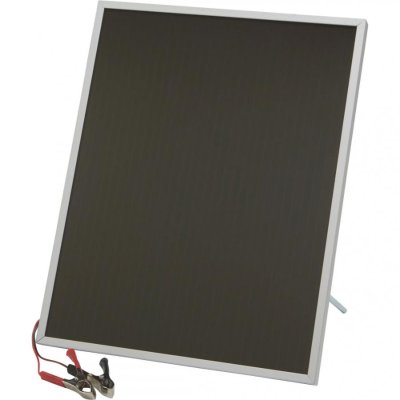I live on a trawler on the hook. 500w of solar on the roof + a diesel generator & an inverter. I pull a skiff behind it with a late 90s 50hp Honda 4 stroke. I have 1 battery in the bow for my electric trolling motor (12v system). My current solution to charging my trolling motor battery is a 6amp charger mounted on the skiff + an extension cord (slightly longer than my skiffs painter line). So ive got DC coming out my battery bank, converted to AC by trawlers inverter, then converted back to DC by charger on the skiff.
I'd like to think there's a more efficient way to do this. I know the inverter draws 1.7amps just being on, so i usually leave it off unless I want to watch TV or use the microwave -- but obviously if I need to charge my trolling motor battery, it needs to stay on.
I fish 3-5 days a week. But the trolling motor, doesnt get that much use. Mostly for netting bait or to throw a few casts at a docklight. So its not like the battery is discharged everytime I use it. On the otherhand, my outboard gets alot of hours, whether idling in the inlet or trolling offshore.
As for alternative charging methods:
A) I see minnkota makes a product that sends excess power (from the engine alternator) to a spare battery once the starting battery is full. But would my little outboard be putting out enough excess to have much effect?
B) 20W solar panel with charge controller mounted on skiff. I've read these put out about 1.5amps at full midday sun. Not alot, but I live in Miami, so it would add up to something. Biggest problem with that is not really a good spot to mount it.
Any insight on either of those solutions? Or another alternative?
It doesnt need to be a 100% solution. No big deal to hook up a charger when troller battery gets used alot in a day. I just want a solution that can recharge after the typical minor usage, so that I don't need to plug the damn thing into AC power constantly and end up wasting more amps in the conversion process than im actually putting into the battery.
Also, if plugging in is inevitable, could I at least eliminate the inverter/conversion loss and run an extension cord from my trawler DC outlet to a dc charge controller at the trolling motor battery on the skiff?
I'd like to think there's a more efficient way to do this. I know the inverter draws 1.7amps just being on, so i usually leave it off unless I want to watch TV or use the microwave -- but obviously if I need to charge my trolling motor battery, it needs to stay on.
I fish 3-5 days a week. But the trolling motor, doesnt get that much use. Mostly for netting bait or to throw a few casts at a docklight. So its not like the battery is discharged everytime I use it. On the otherhand, my outboard gets alot of hours, whether idling in the inlet or trolling offshore.
As for alternative charging methods:
A) I see minnkota makes a product that sends excess power (from the engine alternator) to a spare battery once the starting battery is full. But would my little outboard be putting out enough excess to have much effect?
B) 20W solar panel with charge controller mounted on skiff. I've read these put out about 1.5amps at full midday sun. Not alot, but I live in Miami, so it would add up to something. Biggest problem with that is not really a good spot to mount it.
Any insight on either of those solutions? Or another alternative?
It doesnt need to be a 100% solution. No big deal to hook up a charger when troller battery gets used alot in a day. I just want a solution that can recharge after the typical minor usage, so that I don't need to plug the damn thing into AC power constantly and end up wasting more amps in the conversion process than im actually putting into the battery.
Also, if plugging in is inevitable, could I at least eliminate the inverter/conversion loss and run an extension cord from my trawler DC outlet to a dc charge controller at the trolling motor battery on the skiff?


